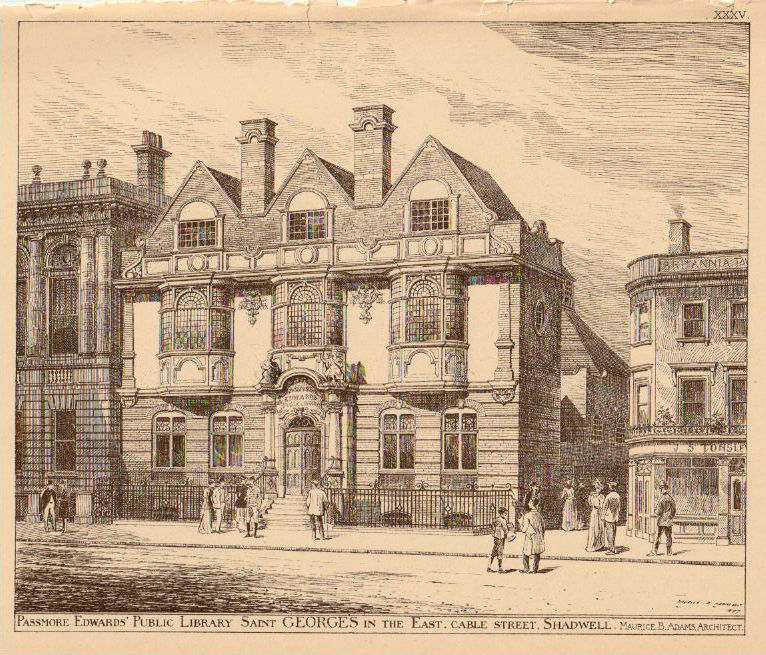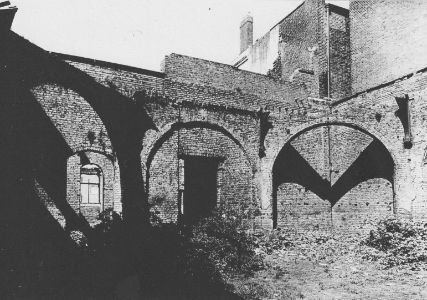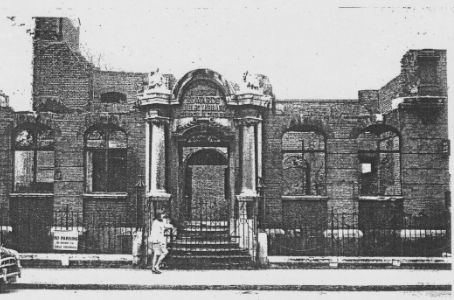
Although the parish of St George in the East was one of the poorest in the East End the product of a penny rate amounted to £800 per annum, but, in the view of the Vestry, insufficient to pay for the construction of a free library. Passmore Edwards responded to an appeal for assistance by saying that he was so involved in building libraries elsewhere that he couldn’t help, but added that if they started a public subscription fund then he would reconsider their request as soon as he could. An offer from one of the Vestry Members to start the fund off with £1,000, ‘provided there was no lending library’, was met with scorn from Edwards, who considered it unwise to leave out a lending library. The Commissioner removed the condition but reduced his offer to £500, and Edwards came back with an offer of £5,000, and a thousand books. The selected site, in Cable Street next to the Vestry, was owned by The Earl of Winterton, who offered to sell for £3,000, but donated £200 of the price to the library fund. Other donations received included £180 from the local breweries, which was surprising since one of Edwards’ aims in creating Free Libraries was to provide workingmen with an alternative to the public house during their limited recreational hours.
Maurice Adams’ design drawings were exhibited at the Royal Academy and appeared in the Building News on the 21 May 1897, the day before Lord Russell, the Lord Chief Justice, opened the library.
The main feature of Adams’ design was the reading room, which had a steel octagonal roof, 9 metres wide, rising over a series of arches and equally spaced piers. The room, however, was square with newspaper stands along two walls and grille-fronted bookcases on the others. The reference room occupied the whole of the first floor, which had three projecting oriel windows overlooking Cable-street. The library was in red brick to first floor level and finished with stucco above whilst he facade was in Portland stone with monolithic columns flanking the doorway and with an arched pediment above. Above the columns were two seated statues representing ‘Literature’ and ‘Art’ sculptured by Nathaniel Hitch in Portland stone, and commissioned by Passmore Edwards as an additional gift to the residents of the parish.
I have found this type written report on the initial arrangements at the library and the rearrangements that took lace over the 40 years beofer the commencement of WW2. It finished with a note that “This brief history of past adaptations provides justification for the claims that a building erected to meet the requirements and conditions of 40 years ago must of necessity have become restrict in its possible uses, not capable of meeting the greatly increased demands.” This report was sadly prophetic as incendiary bombs destroyed the Library during the 1941 Blitz. The shell, in an unsafe condition, was pulled down leaving just the front elevation which was eventually pulled down in the late 1960s.
A temporary single storey prefabricated Library was built in St George-in-the-East Churchyard in 1953 and this remained in use until the late 1980s when a new Library was built in Watney Market.

